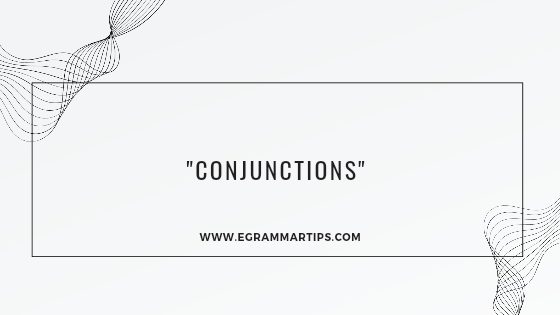
Table of Contents
Toggle1. Introduction to Conjunctions
Conjunctions are essential in English grammar as they link words, phrases, or clauses, helping to create fluid, connected sentences. Using conjunctions properly improves writing clarity and coherence, making ideas flow logically.
2. Types of Conjunctions
There are three primary types of conjunctions in English:
- Coordinating Conjunctions: Connect words or phrases of equal importance.
- Subordinating Conjunctions: Link dependent clauses to independent clauses.
- Correlative conjunctions: Work in pairs to connect balanced sentence elements.
3. Coordinating Conjunctions (FANBOYS)
The acronym FANBOYS helps remember the coordinating conjunctions: For, And, Nor, But, Or, Yet, So. These words link equal parts of a sentence, such as two independent clauses or parallel phrases.
4. Uses of Each Coordinating Conjunction
Each coordinating conjunction serves a distinct purpose:
- For: Shows reason (e.g., “I went to bed early, for I was tired.”)
- And: Adds information (e.g., “She likes apples and bananas.”)
- Nor: Used to combine two negative options (e.g., “He didn’t call, nor did he text.”)
- But: Shows contrast (e.g., “I wanted to go, but I couldn’t find the time.”)
- Or: Presents alternatives (e.g., “Would you like tea or coffee?”)
- Yet: Shows contrast, similar to “but” (e.g., “She tried hard, yet she couldn’t succeed.”)
- So: Shows result or consequence (e.g., “He was hungry, so he made a sandwich.”)
5. Subordinating Conjunctions
Subordinating conjunctions link a dependent clause to an independent clause, creating complex sentences. Examples include because, although, since, while, if, and unless.
For instance:
“Because it was raining, we stayed inside.”
“I’ll go if you go with me.”
6. Common Subordinating Conjunctions
These conjunctions create relationships like cause, contrast, condition, and time:
- Cause: because, since (e.g., “I left early because I was tired.”)
- Contrast: although, even though, whereas (e.g., “Although it was raining, we went for a walk.”)
- Condition: if, unless, provided that (e.g., “I’ll go if you come along.”)
- Time: when, while, before, after (e.g., “I was reading when she called.”)
7. Correlative Conjunctions
Correlative conjunctions come in pairs and link balanced phrases or clauses. Common pairs include either/or, neither/nor, both/and, and not only/but also.
Examples:
“Either we go now, or we’ll miss the movie.”
“She is not only smart but also hardworking.”
8. List of Common Correlative Conjunctions
Here are more pairs and examples:
- Neither/Nor: “He neither called nor texted.”
- Both/And: “Both Alice and Tom are coming.”
- Whether/Or: “I’m not sure whether to go or stay.”
9. Conjunctions vs. Conjunctive Adverbs
While conjunctions link clauses, conjunctive adverbs link ideas and often require a semicolon.
Examples of conjunctive adverbs are however, therefore, and meanwhile.
Example:
“I wanted to go; however, I was too tired.”
10. Punctuation Rules with Conjunctions
Coordinating Conjunctions: Generally, place a comma before a coordinating conjunction that links two independent clauses (e.g., “She was tired, so she went to bed.”).
Subordinating Conjunctions: If the dependent clause comes first, add a comma (e.g., “Because it was late, they decided to leave.”). No comma is needed if the main clause comes first (e.g., “They decided to leave because it was late.”).
11. Combining Multiple Conjunctions in Sentences
You can use multiple conjunctions to create compound-complex sentences:
Example:
“I wanted to go, but I was tired, so I stayed home.”
12. Avoiding Conjunction Misuse
Common errors include:Run-on sentences: Using conjunctions without proper punctuation (e.g., “He was tired he went home”).
Sentence fragments: Incomplete thoughts (e.g., “Although I tried.”).
13. Transitioning Between Ideas with Conjunctions
Conjunctions help create smooth transitions, linking thoughts for a logical flow.
For instance:“I wanted to leave early, yet I stayed to help.”
14. Exercises and Practice Sentences
1. Combine sentences using the appropriate conjunctions.2. Identify conjunction types in given sentences.
Example:
“She was tired, so she took a nap.”
15. Conjunctions in Spoken vs. Written English
Spoken English often uses informal conjunctions or drops conjunctions entirely. Written English may use more formal structures.
Example:
Spoken: “So, you’re coming, right?”
Written: “Therefore, he decided to stay.”